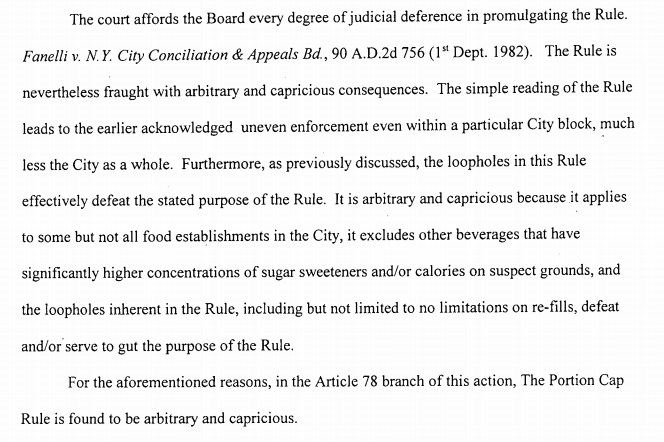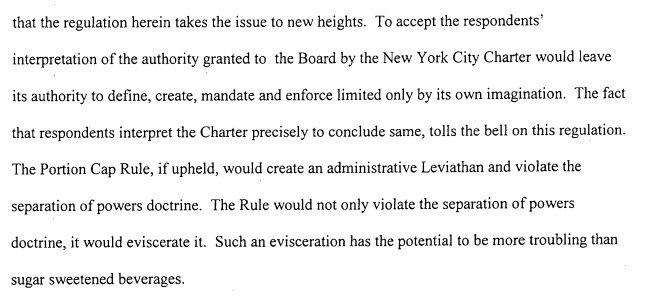Back in December, I attended oral argument in Decker v. Northwest Environmental Defense Center, a Clean Water Act case that I did not know much about. At the time, I noted that the Chief Justice smacked down the government lawyer for the EPA’s decision to change their policy mere days before the argument. Also, the attorneys for the logging interest begged the Court not to send the case back to the 9th Circuit (I sat next to the attorney’s sister), while the environmentalists begged the Court to DIG the case.
Today we have an opinion in this case. Justice Kenendy writing for the Court found that the recent amendments do not make the case moot. Applying Auer deference, the Court finds that the EPA’s interpretation is reasonable.
The EPA interprets its regulation to exclude the type of stormwater discharges from logging roads at issue here. See Brief for United States as Amicus Curiae 24–27. For reasons now to be explained, the Court concludes the EPA’s determination is a reasonable interpretation of its own regulation; and, in consequence, deference is accorded to the interpretation under Auer v. Robbins, 519 U. S. 452, 461 (1997).
Justice Scalia had an important concurrence on Auer deference.
I do not join Part III. The Court there gives effect to a reading of EPA’s regulations that is not the most natural one, simply because EPA says that it believes the unnatural reading is right. It does this, more- over, even though the agency has vividly illustrated that it can write a rule saying precisely what it means—by doing just that while these cases were being briefed. Enough is enough.
To Scalia, Auer is nothing more than Chevron deference for regulations:
The canonical formulation of Auer deference is that we will enforce an agency’s interpretation of its own rules unless that interpretation is “plainly erroneous or inconsistent with the regulation.” Seminole Rock, supra, at 414. But of course whenever the agency’s interpretation of the regulation is different from the fairest reading, it is in that sense “inconsistent” with the regulation. Obviously, that is not enough, or there would be nothing for Auer to do. In practice, Auer deference is Chevron deference applied to regulations rather than statutes. See Chevron U. S. A. Inc. v. Natural Resources Defense Council, Inc., 467 U. S. 837 (1984). The agency’s interpretation will be accepted if, though not the fairest reading of the regulation, it is a plausible reading—within the scope of the ambiguity that the regulation contains
Wow, Nino is schmalzing it up with citations to Holmes & Marbury v. Madison & Montesquieu & Blackstone & Federalist 81!?
As Justice Holmes put it: “[w]e do not inquire what the legislature meant; we ask only what the statute means.” The Theory of Legal Interpretation, 12 Harv. L. Rev. 417, 419 (1899). . . . But the purpose of interpretation is to determine the fair meaning of the rule—to “say what the law is,” Marbury v. Madison . . . “When the legislative and executive powers are united in the same person . . . there can be no liberty; because apprehensions may arise, lest the same monarch or senate should enact tyrannical laws, to execute them in a tyrannical manner.” Montesquieu, Spirit of the Laws . . . Blackstone condemned the practice of resolving doubts about “the construction of the Roman laws” by “stat[ing] the case to the emperor in writing, and tak[ing] his opinion upon it.” 1 W. Blackstone, Commentaries on the Laws of England 58 (1765). And our Constitution did not mirror the British practice of using the House of Lords as a court of last resort, due in part to the fear that he who has “agency in passing bad laws” might operate in the “same spirit” in their interpretation. The Federalist No. 81, pp. 543–544 (J. Cooke ed. 1961)
For all these reasons, Nino would not defer to an agencies interpretation of its own rules.
In any case, however great may be the efficiency gains derived from Auer deference, beneficial effect cannot jus- tify a rule that not only has no principled basis but contravenes one of the great rules of separation of powers: He who writes a law must not adjudge its violation.
…
Because the fairest reading of the agency’s rules proscribes the conduct at issue in these cases, I would affirm the judgment below. It is time for us to presume (to coin a phrase) that an agency says in a rule what it means, and means in a rule what it says there.
Au Revoir Auer.
Chief Justice Roberts, joined by Justice Alito, disagreed with Scalia’s opinion, and said this was not the right time to revisit Auer.
The opinion concurring in part and dissenting in part raises serious questions about the principle set forth in Bowles v. Seminole Rock & Sand Co., 325 U. S. 410 (1945), and Auer v. Robbins, 519 U. S. 452 (1997). It may be appropriate to reconsider that principle in an appropriate case. But this is not that case.
Not even the Professors want to revisit Auer!
Respondent suggested reconsidering Auer, in one sentence in a footnote, with no argument. See Brief for Respondent 42, n. 12. Petitioners said don’t do it, again in a footnote. See Reply Brief for Petitioners in No. 11–338, p. 4, n. 1; see also Turner Broadcasting System, Inc. v. FCC, 520 U. S. 180, 223–224 (1997) (declining to decide question that received only “scant argumentation”). Out of 22 amicus briefs, only two—filed by dueling groups of law professors—addressed the issue on the merits.
And Roberts tells “the bar” that Auer and Seminale Rock is in doubt.
The issue is a basic one going to the heart of administrative law. Questions of Seminole Rock and Auer deference arise as a matter of course on a regular basis. The bar is now aware that there is some interest in reconsidering those cases, and has available to it a concise statement of the arguments on one side of the issue. I would await a case in which the issue is properly raised and argued. The present cases should be decided as they have been briefed and argued, under existing precedent
Scalia, Roberts, and Alito are not down for Auer.

